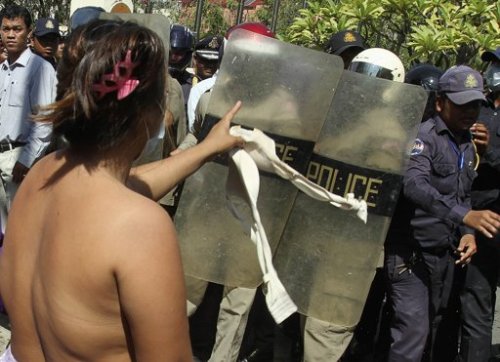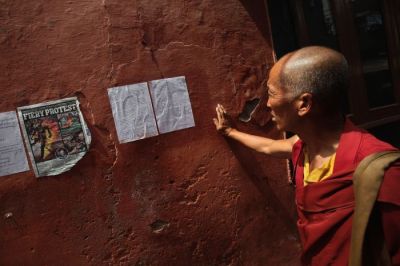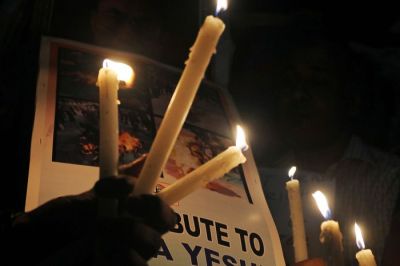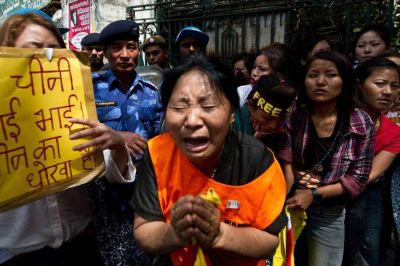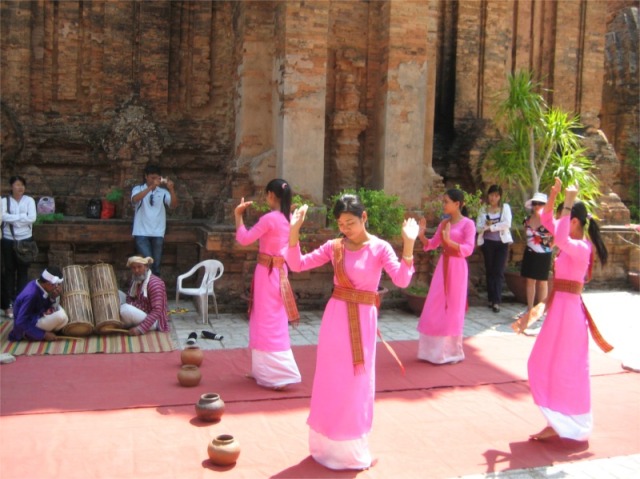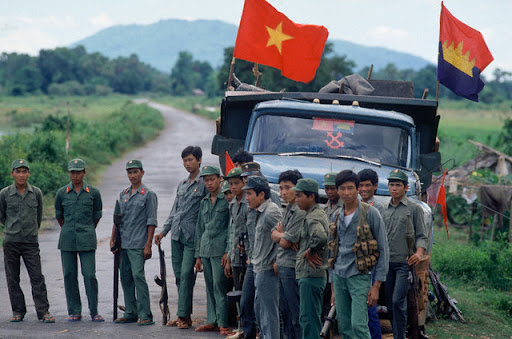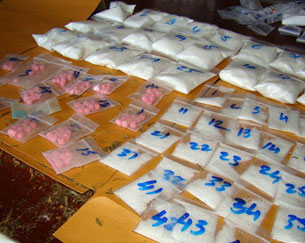PHNOM PENH, March 29 - (Reuters) - China's presence in the
Cambodian capital Phnom Penh is obvious. The city skyline is
dotted by Chinese-funded projects. But the full extent of
Beijing's influence here will be tested when President Hu Jintao
visits this week ahead of a regional summit.
The timing of Hu's visit has
raised suspicion Beijing may pressure Cambodia to curb discussions at a
Southeast Asian leaders' summit on the vexed question of the South China Sea. Phnom Penh has already said the issue is off the agenda.
"They have the money, so they have the power," said Sem On, a motorbike taxi driver sitting on a railing near the 2nd Chroy Changvar bridge, funded by $27.5 million in Chinese soft loans.
Sem On complains that the Chinese-funded bridge employed more Chinese than Cambodian labourers.
Symbolically, the bridge is being erected next to another bridge restored with Japanese funds in the 1990s, a concrete example of the shift in Asia's economic centre of gravity and in Cambodia's main source of development funds.
Cambodia's authoritarian president Hun Sen says China's investments come with no strings attached, but the assertion will be tested when Hu makes his first visit on Friday, four days ahead of the leaders' summit where some countries will push to address maritime tensions over the South China Sea.
The South China Sea tops Southeast Asia's security agenda after a series of naval clashes over the vast region believed to be rich in energy reserves.
And the issue now risks worsening a divide within the 10-member Association of Southeast Asian Nations (ASEAN) over how to handle the decades-old territorial dispute at a time when Washington is refocusing its attention on Asia.
"We are not expecting any support from them," a Philippine foreign ministry official told Reuters, referring to Cambodia and fellow "Mekong" countries Laos, Myanmar and Thailand, which have also been reluctant to raise the issue.
Philippine officials say they are "very frustrated" over Chinese efforts to block discussion of the issue within ASEAN, but would insist on raising the matter in Phnom Penh even though Cambodia has declared it off the agenda.
Chinese navy ships threatened to ram a Philippine research vessel last March, prompting Manila to scramble planes and ships to the disputed Reed Bank area. The incident prompted Philippine President Benigno Aquino to seek closer ties with Washington, which has signalled a military "pivot" back to Asia. The two allies plan to hold war games around the Reed Bank in April.
"This is a real test for them (ASEAN)," said Carl Baker, director of programmes at the Pacific Forum CSIS in Hawaii.
"It hasn't been very effective because it operates on a basis of consensus, and there is no consensus and there never will be a consensus on the territorial issues."
CAMBODIA IN CHINA'S ORBIT
Cambodia has been rapidly pulled into China's economic orbit in recent years and rarely speaks on the maritime dispute, in which it is not one of the six claimants.
Its tenure as chair of ASEAN this year adds to doubts that the group will be able to formalise a 2002 declaration of conduct and cooperation with China over the South China Sea.
"It's taken them nine years to agree on a set of implementation guidelines for the 2002 agreement," said Ian Storey, a senior fellow at Singapore's Institute of Southeast Asian Studies. "What are the chances of them coming up with a formal and binding agreement in four months?"
A series of naval flashpoints over the past year, as China, the Philippines, and Vietnam push ahead with plans to develop oil and gas fields, highlight the inadequacy of that agreement and the shortcomings of the ASEAN approach, critics say.
With Myanmar and Laos due to chair ASEAN in 2014 and 2015 following Brunei's turn next year, regional efforts at resolving the dispute could be heading into the deep freeze for years.
China, which says it has sovereignty over the sea and the islands within a looping "nine-dashed line" on its maps, rejected a Philippine proposal within ASEAN in November to define contested areas and allow joint development.
But China has gradually softened its opposition to ASEAN-level discussions, part of a charm offensive to allay concerns about its growing "blue-water" navy. But it still rejects "internationalisation" of the dispute, saying it can be best resolved on a bilateral basis.
Milton Osborne, a Cambodia expert and visiting fellow at the Lowy Institute in Australia, said suggestions that China would exert pressure over the South China Sea issue were speculation but that Cambodia would want to avoid any acrimony on its watch.
"Cambodia is in a privileged position in its dealings with China and I don't think it is going to abandon that position," he said. (Additional reporting by Prak Chan Tul in Phnom Penh; Manuel Mogato in Manila, Michael Martina in Beijing; John Ruwitch in Hanoi; Editing by Alan Raybould and Michael Perry)
"They have the money, so they have the power," said Sem On, a motorbike taxi driver sitting on a railing near the 2nd Chroy Changvar bridge, funded by $27.5 million in Chinese soft loans.
Sem On complains that the Chinese-funded bridge employed more Chinese than Cambodian labourers.
Symbolically, the bridge is being erected next to another bridge restored with Japanese funds in the 1990s, a concrete example of the shift in Asia's economic centre of gravity and in Cambodia's main source of development funds.
Cambodia's authoritarian president Hun Sen says China's investments come with no strings attached, but the assertion will be tested when Hu makes his first visit on Friday, four days ahead of the leaders' summit where some countries will push to address maritime tensions over the South China Sea.
The South China Sea tops Southeast Asia's security agenda after a series of naval clashes over the vast region believed to be rich in energy reserves.
And the issue now risks worsening a divide within the 10-member Association of Southeast Asian Nations (ASEAN) over how to handle the decades-old territorial dispute at a time when Washington is refocusing its attention on Asia.
"We are not expecting any support from them," a Philippine foreign ministry official told Reuters, referring to Cambodia and fellow "Mekong" countries Laos, Myanmar and Thailand, which have also been reluctant to raise the issue.
Philippine officials say they are "very frustrated" over Chinese efforts to block discussion of the issue within ASEAN, but would insist on raising the matter in Phnom Penh even though Cambodia has declared it off the agenda.
Chinese navy ships threatened to ram a Philippine research vessel last March, prompting Manila to scramble planes and ships to the disputed Reed Bank area. The incident prompted Philippine President Benigno Aquino to seek closer ties with Washington, which has signalled a military "pivot" back to Asia. The two allies plan to hold war games around the Reed Bank in April.
"This is a real test for them (ASEAN)," said Carl Baker, director of programmes at the Pacific Forum CSIS in Hawaii.
"It hasn't been very effective because it operates on a basis of consensus, and there is no consensus and there never will be a consensus on the territorial issues."
CAMBODIA IN CHINA'S ORBIT
Cambodia has been rapidly pulled into China's economic orbit in recent years and rarely speaks on the maritime dispute, in which it is not one of the six claimants.
Its tenure as chair of ASEAN this year adds to doubts that the group will be able to formalise a 2002 declaration of conduct and cooperation with China over the South China Sea.
"It's taken them nine years to agree on a set of implementation guidelines for the 2002 agreement," said Ian Storey, a senior fellow at Singapore's Institute of Southeast Asian Studies. "What are the chances of them coming up with a formal and binding agreement in four months?"
A series of naval flashpoints over the past year, as China, the Philippines, and Vietnam push ahead with plans to develop oil and gas fields, highlight the inadequacy of that agreement and the shortcomings of the ASEAN approach, critics say.
With Myanmar and Laos due to chair ASEAN in 2014 and 2015 following Brunei's turn next year, regional efforts at resolving the dispute could be heading into the deep freeze for years.
China, which says it has sovereignty over the sea and the islands within a looping "nine-dashed line" on its maps, rejected a Philippine proposal within ASEAN in November to define contested areas and allow joint development.
But China has gradually softened its opposition to ASEAN-level discussions, part of a charm offensive to allay concerns about its growing "blue-water" navy. But it still rejects "internationalisation" of the dispute, saying it can be best resolved on a bilateral basis.
Milton Osborne, a Cambodia expert and visiting fellow at the Lowy Institute in Australia, said suggestions that China would exert pressure over the South China Sea issue were speculation but that Cambodia would want to avoid any acrimony on its watch.
"Cambodia is in a privileged position in its dealings with China and I don't think it is going to abandon that position," he said. (Additional reporting by Prak Chan Tul in Phnom Penh; Manuel Mogato in Manila, Michael Martina in Beijing; John Ruwitch in Hanoi; Editing by Alan Raybould and Michael Perry)




